Dieter ROTH
Interview by Irmelin Lebeer, 1976
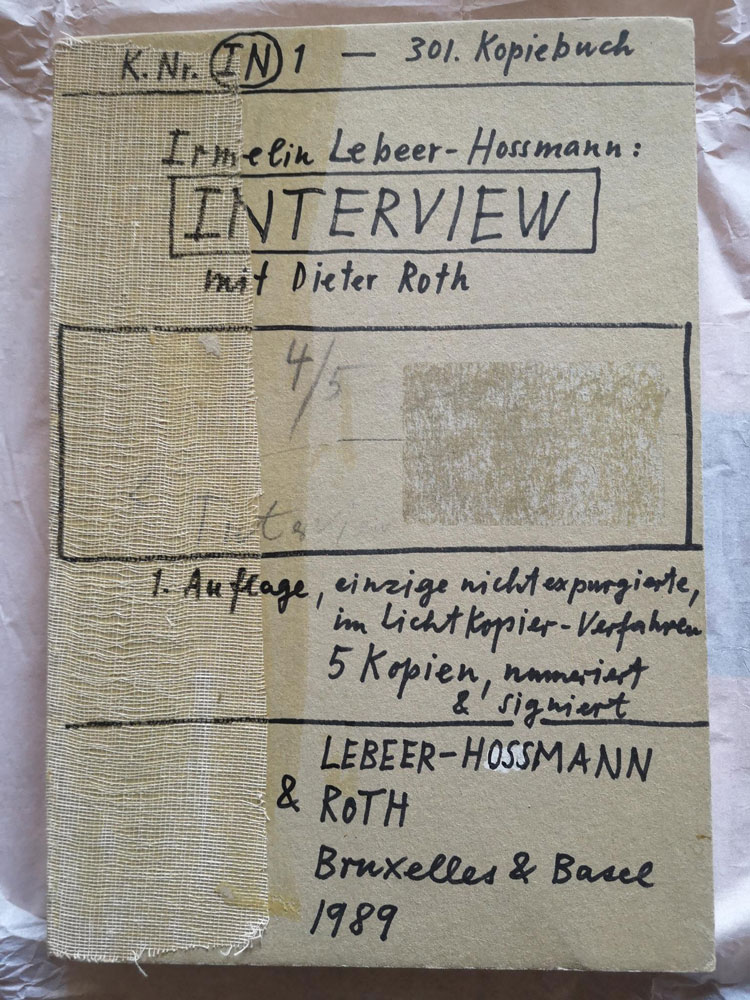
Original, un-shortened version of the interview between Dieter Roth and Irmelin Lebeer that was condicted over the courses of several days (September 28-30, 1976) in Hamburg, 370 pages, designed and signed by the artist, 5 copies.
To help us keep track of this long interview, I had written the dates of the events in his biography that Dieter referred to in the margins. I organized the whole thing myself by giving it titles and adding notes when Dieter quoted something. We did the interview over several days, and when he got tired of talking, he would read his poems or send me out to get beer! When he read his own poems, it was wonderful. That's when he was happy.
Sammlung flachen Abfalls, 1975-1976 (Flat Waste Collection)





Mixed media in 623 folders A4 in 5 wooden shelving units.
A year's worth of two-dimensional waste (printouts, packaging, notes, labels, sketches, etc.) presented in daily binders, containing an average of 60 to 120 transparent pockets in which all the flat objects that were in the artist's possession on that day are stored (one or more binders per day). Each binder (32 x 29 x 7 cm) is dated, located, numbered, and signed. In collaboration with Editions Hansjörg Mayer, Stuttgart London Reykjavik. Part of Flick collection.
Radiosonate, 1978
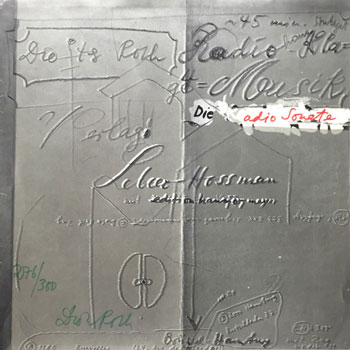

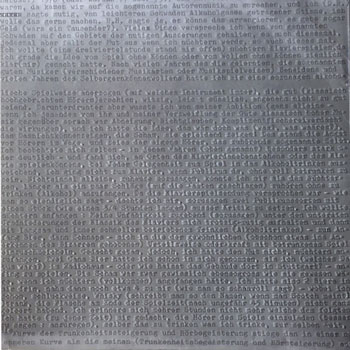
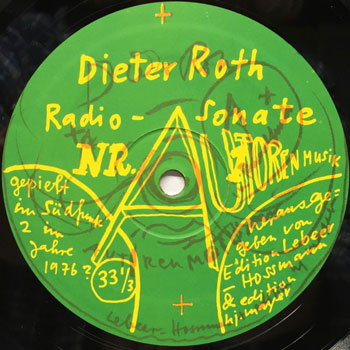

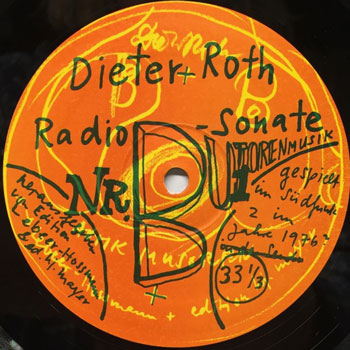
Vinyl, LP, 12”, illustrated sleeve; approx. 31.5 × 31.5 cm sleeve size. Limited edition of 300 copies. Limited edition of 300 copies, signed and numbered, partly with handwritten title.
Edition Lebeer-Hossmann in cooperation with Edition Hansjörg Mayer
Two sides (Side A and Side B) making up the LP: approximate durations are 19:42 for Side A, Tand 22:36 for Side B.
The work is essentially an experimental / live performance / radio-recording piece. It involves Dieter Roth at the piano (“live am Klavier”) in a studio of Süddeutscher Rundfunk (SDR) in Stuttgart, around 1976, performing a kind of improvisational “dilettantish” piano piece that becomes the radio sonata.
The LP is a documentation of that performance (or the radio house / studio recording) rather than a strictly composed fixed score. It includes interruptions, the artist’s own behavior (e.g. drinking whiskey, talking with technicians), etc. This gives it a performative, process-based character.
Interview by Irmelin Lebeer, 1976

Original, un-shortened version of the interview between Dieter Roth and Irmelin Lebeer that was condicted over the courses of several days (September 28-30, 1976) in Hamburg, 370 pages, designed and signed by the artist, 5 copies.
To help us keep track of this long interview, I had written the dates of the events in his biography that Dieter referred to in the margins. I organized the whole thing myself by giving it titles and adding notes when Dieter quoted something. We did the interview over several days, and when he got tired of talking, he would read his poems or send me out to get beer! When he read his own poems, it was wonderful. That's when he was happy.
Sammlung flachen Abfalls, 1975-1976 (Flat Waste Collection)



Mixed media in 623 folders A4 in 5 wooden shelving units.
A year's worth of two-dimensional waste (printouts, packaging, notes, labels, sketches, etc.) presented in daily binders, containing an average of 60 to 120 transparent pockets in which all the flat objects that were in the artist's possession on that day are stored (one or more binders per day). Each binder (32 x 29 x 7 cm) is dated, located, numbered, and signed. In collaboration with Editions Hansjörg Mayer, Stuttgart London Reykjavik. Part of Flick collection.
Radiosonate, 1978




Vinyl, LP, 12”, illustrated sleeve; approx. 31.5 × 31.5 cm sleeve size. Limited edition of 300 copies. Limited edition of 300 copies, signed and numbered, partly with handwritten title.
Edition Lebeer-Hossmann in cooperation with Edition Hansjörg Mayer
Two sides (Side A and Side B) making up the LP: approximate durations are 19:42 for Side A, Tand 22:36 for Side B.
The work is essentially an experimental / live performance / radio-recording piece. It involves Dieter Roth at the piano (“live am Klavier”) in a studio of Süddeutscher Rundfunk (SDR) in Stuttgart, around 1976, performing a kind of improvisational “dilettantish” piano piece that becomes the radio sonata.
The LP is a documentation of that performance (or the radio house / studio recording) rather than a strictly composed fixed score. It includes interruptions, the artist’s own behavior (e.g. drinking whiskey, talking with technicians), etc. This gives it a performative, process-based character.
